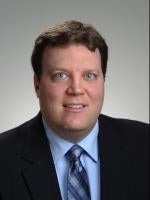The Patent Prosecution Highway (PPH) can accelerate the examination of a patent application in a second national patent office (Office of Second Filing or OSF) if examination work has been completed in another national patent office (Office of First Filing or OFF). A number of bilateral agreements now exist between various patent offices to take advantage of workload sharing, such as the USPTO, JPO, KIPO, UK-IPO, EPO, CIPO (Canadian), IPAU (Australian), DKPTO (Danish), IPOS (Singaporean), PRH (Finnish) and DPMA (German).
The PPH takes advantage of the work done by the OFF when examining a corresponding application in the OSF. If at least one claim is found to be allowable in the OFF and examination has not begun in the OSF, then accelerated examination can be requested in the OSF. The PPH permits each participating patent office to build upon the work previously done by the other patent office. By promoting workload sharing between the patent offices, duplicate work can be reduced, resulting in a more efficient examination of patent applications.
For example, the PPH program has been operating between the USPTO and the JPO since July 3, 2006 and over the past couple of years has shown a tremendous ability to increase efficiency in the OSF. USPTO statistics thus far have shown that applications in which the JPO was the OFF and the USPTO was the OSF were allowed about 95% of the time in the USPTO, as compared to the non-PPH allowance rate of about 45% in 2008. Furthermore, the statistics have shown that applications filed in the USPTO as the OSF are disposed of in an average of 1.7 actions, as compared to an average of 2.8 actions for non-PPH applications. Also, the statistics have shown that the average time between the filing of a PPH request in the USPTO and receiving a Notice of Allowance is 150 days, as compared to the non-PPH average time of about 32.2 months in 2008. The JPO has also reported benefits of filing PPH applications. When the JPO is the OSF, recent statistics have shown that these applications have a 70% allowance rate and that the average number of days for allowance of a PPH request in Japan is 90.
The criteria for successfully obtaining a grant of a PPH request in the USPTO for an application can become complex and strict. Some of the requirements include a requirement that the PPH request must be filed before examination has begun, a requirement that claims in the U.S. application must be amended to sufficiently correspond to the allowed claims in the OFF, and a requirement of English translations of the claims and the latest office action in the OFF and statements that the English translations are accurate. If the PPH request is defective, the USPTO only permits a single opportunity to correct the defect, otherwise the U.S. application will be examined in due course.
Mr. Aaron Walker is a patent attorney at the Washington, D.C. law firm of Staas & Halsey LLP. The firm has concentrated exclusively in intellectual property law for over 39 years. Additional information is available at www.staasandhalsey.com, via email at info@s-n-h.com, or via telephone at 202.434.1500.



 />i
/>i

